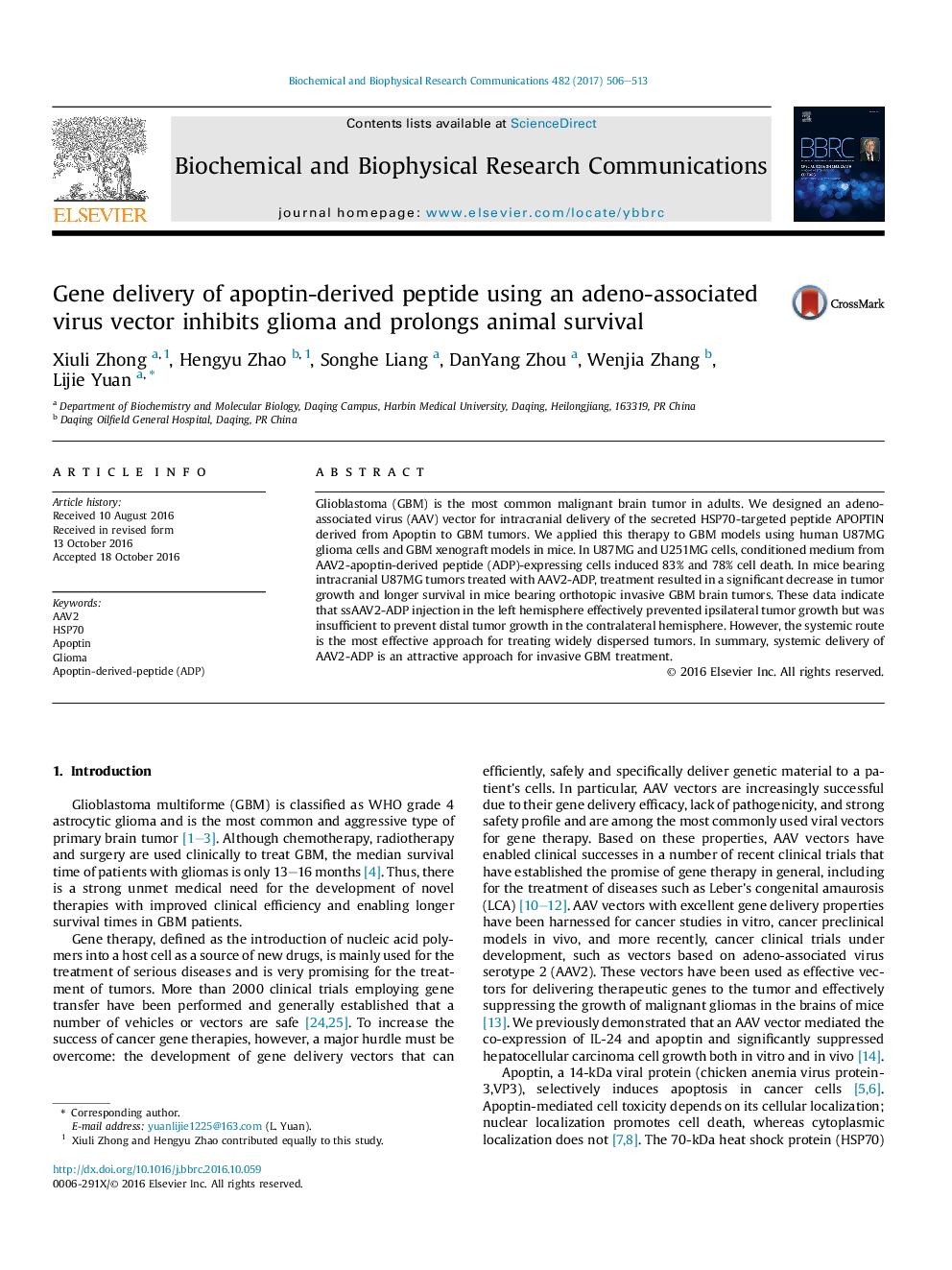| Article ID | Journal | Published Year | Pages | File Type |
|---|---|---|---|---|
| 5506460 | Biochemical and Biophysical Research Communications | 2017 | 8 Pages |
Abstract
Glioblastoma (GBM) is the most common malignant brain tumor in adults. We designed an adeno-associated virus (AAV) vector for intracranial delivery of the secreted HSP70-targeted peptide APOPTIN derived from Apoptin to GBM tumors. We applied this therapy to GBM models using human U87MG glioma cells and GBM xenograft models in mice. In U87MG and U251MG cells, conditioned medium from AAV2-apoptin-derived peptide (ADP)-expressing cells induced 83% and 78% cell death. In mice bearing intracranial U87MG tumors treated with AAV2-ADP, treatment resulted in a significant decrease in tumor growth and longer survival in mice bearing orthotopic invasive GBM brain tumors. These data indicate that ssAAV2-ADP injection in the left hemisphere effectively prevented ipsilateral tumor growth but was insufficient to prevent distal tumor growth in the contralateral hemisphere. However, the systemic route is the most effective approach for treating widely dispersed tumors. In summary, systemic delivery of AAV2-ADP is an attractive approach for invasive GBM treatment.
Related Topics
Life Sciences
Biochemistry, Genetics and Molecular Biology
Biochemistry
Authors
Xiuli Zhong, Hengyu Zhao, Songhe Liang, DanYang Zhou, Wenjia Zhang, Lijie Yuan,
